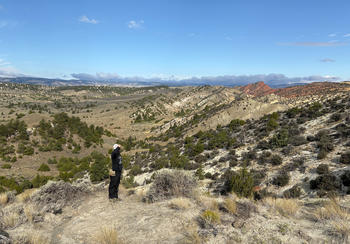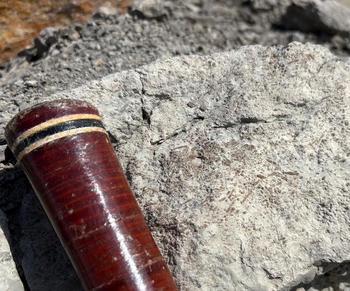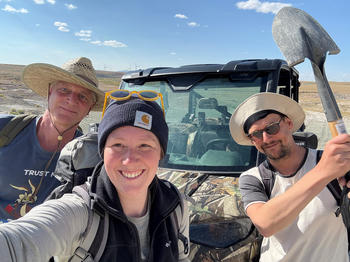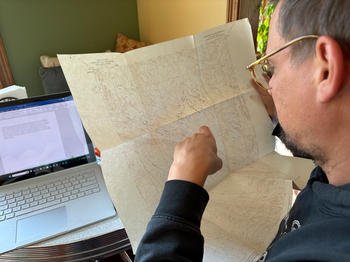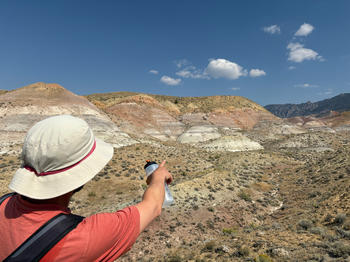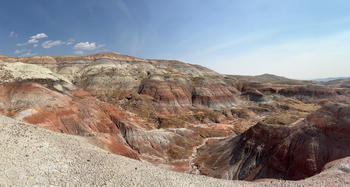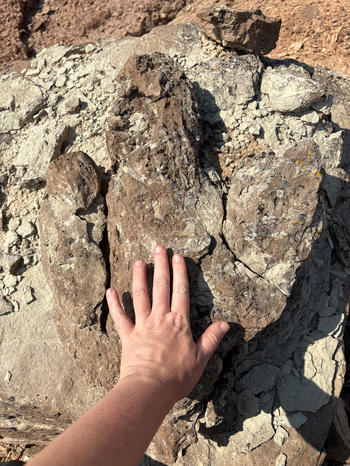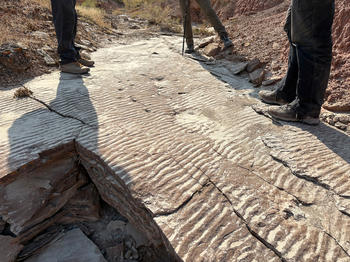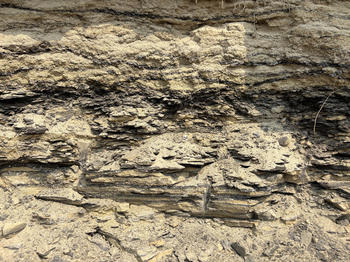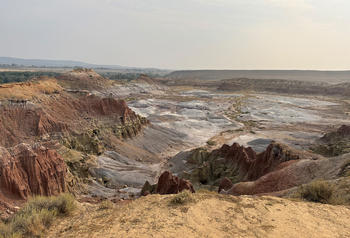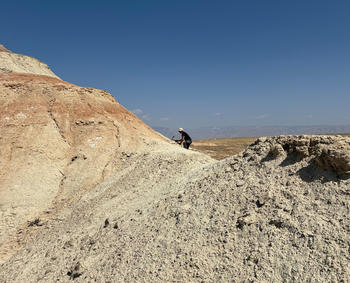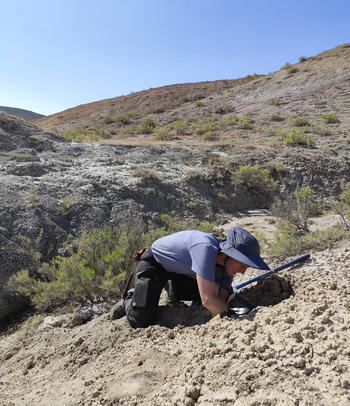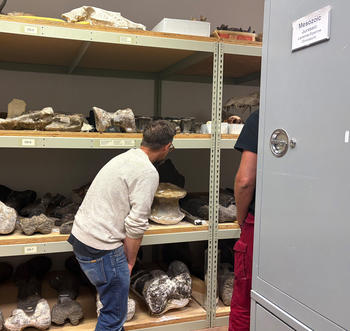Timetravel into the Morrison Ecosystem - Zeitreise in das Morrison Ökosystem
01
Bildquelle: L. Sevens, E. Tschopp, M. Barlage
02
Bildquelle: L. Sevens, E. Tschopp, M. Barlage
03
Bildquelle: L. Sevens, E. Tschopp, M. Barlage
04
Bildquelle: L. Sevens, E. Tschopp, M. Barlage
05
Bildquelle: L. Sevens, E. Tschopp, M. Barlage
06
Bildquelle: L. Sevens, E. Tschopp, M. Barlage
07
Bildquelle: L. Sevens, E. Tschopp, M. Barlage
08
Bildquelle: L. Sevens, E. Tschopp, M. Barlage
09
Bildquelle: L. Sevens, E. Tschopp, M. Barlage
10
Bildquelle: L. Sevens, E. Tschopp, M. Barlage
11
Bildquelle: L. Sevens, E. Tschopp, M. Barlage
12
Bildquelle: L. Sevens, E. Tschopp, M. Barlage
13
Bildquelle: L. Sevens, E. Tschopp, M. Barlage
14
Bildquelle: L. Sevens, E. Tschopp, M. Barlage
15
Bildquelle: L. Sevens, E. Tschopp, M. Barlage
News vom 24.09.2025
Zwei Wochen [Aug./ Sept. 2025] lang sammelten Wissenschaftler*innen der Arbeitsgruppe Paläoklimatologie Sedimentproben und Mikrofossilien aus der oberjurassischen Morrison Formation in Wyoming, um die Umweltbedingungen der einzigartigen Ökosysteme, die in diesen Schichten erhalten blieben, besser zu verstehen. Riesige Herden von Sauropoden Dinosauriern lebten zur Zeit des Jura in diesem Becken im westlichen Nordamerika, welches sich über die Zeit mit vorwiegend Fluss- und Seesedimenten, angereichert mit Fossilien, füllte und so die Diversität der Arten konservierte. Nun möchten die Wissenschaftler*innen über chemische Analysen Rückschlüsse über das hydrologische Regime und die Ablagerungsbedingungen ziehen. Hilfreich werden dabei Isotopenanalysen und die Identifizierung von Mikrofossilien sein. Wir warten gespannt auf die Ergebnisse!
For two weeks, scientists from the Paleoclimatology working group collected sediment samples and microfossils from the Upper Jurassic Morrison Formation in Wyoming, to better understand the environmental conditions of the unique ecosystems preserved in these layers. During the Jurassic period, vast herds of sauropod dinosaurs lived in this basin in western North America, which over time filled with predominantly river and lake sediments partly enriched with fossils, preserving the record of species diversity. The scientists will use chemical analyses to draw conclusions about the hydrological regime and the depositional conditions. Isotope analyses and the identification of microfossils will be crucial in this process. We eagerly await the results!
Fotos: L. Sevens, E. Tschopp, M. Barlage
